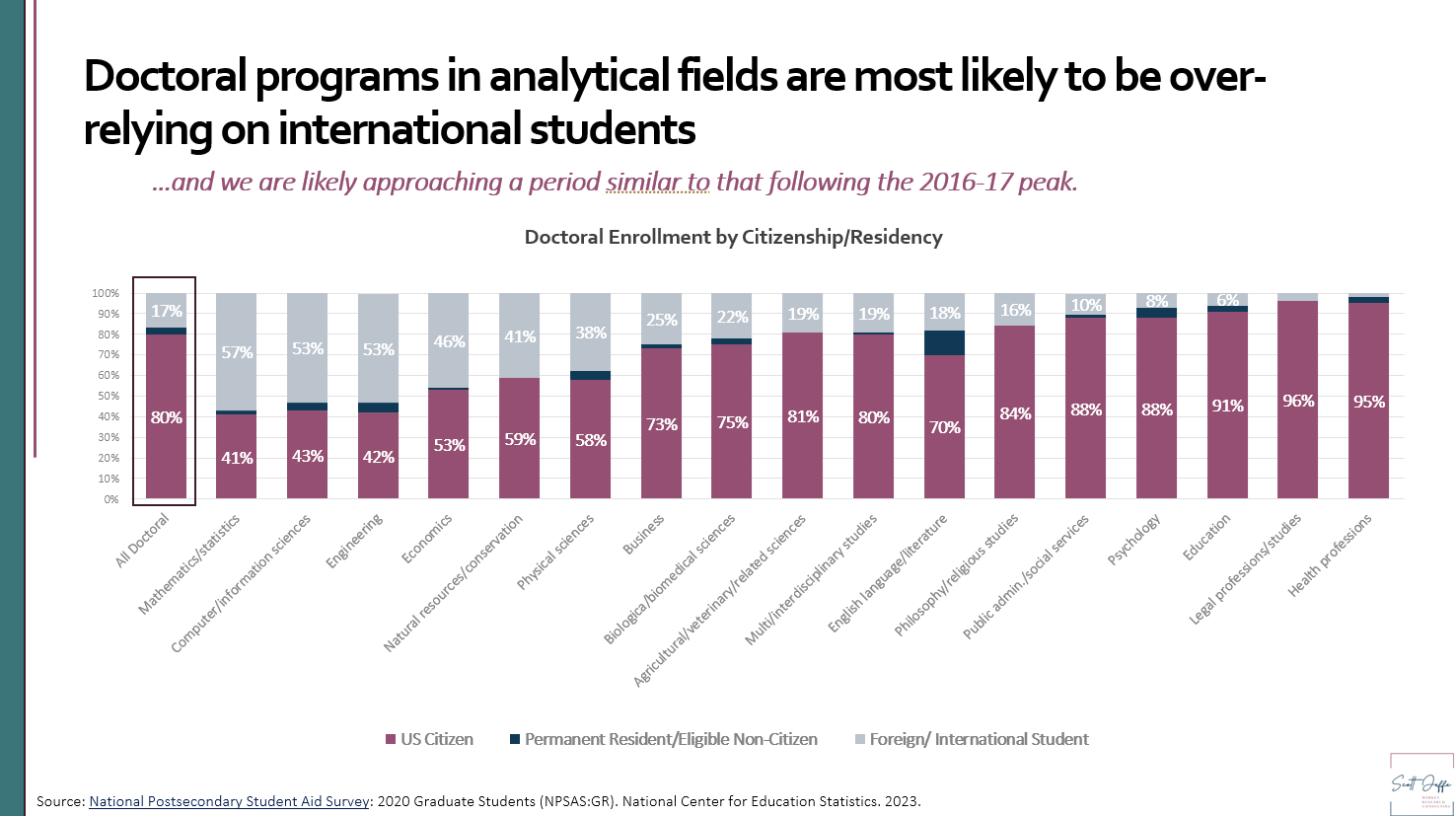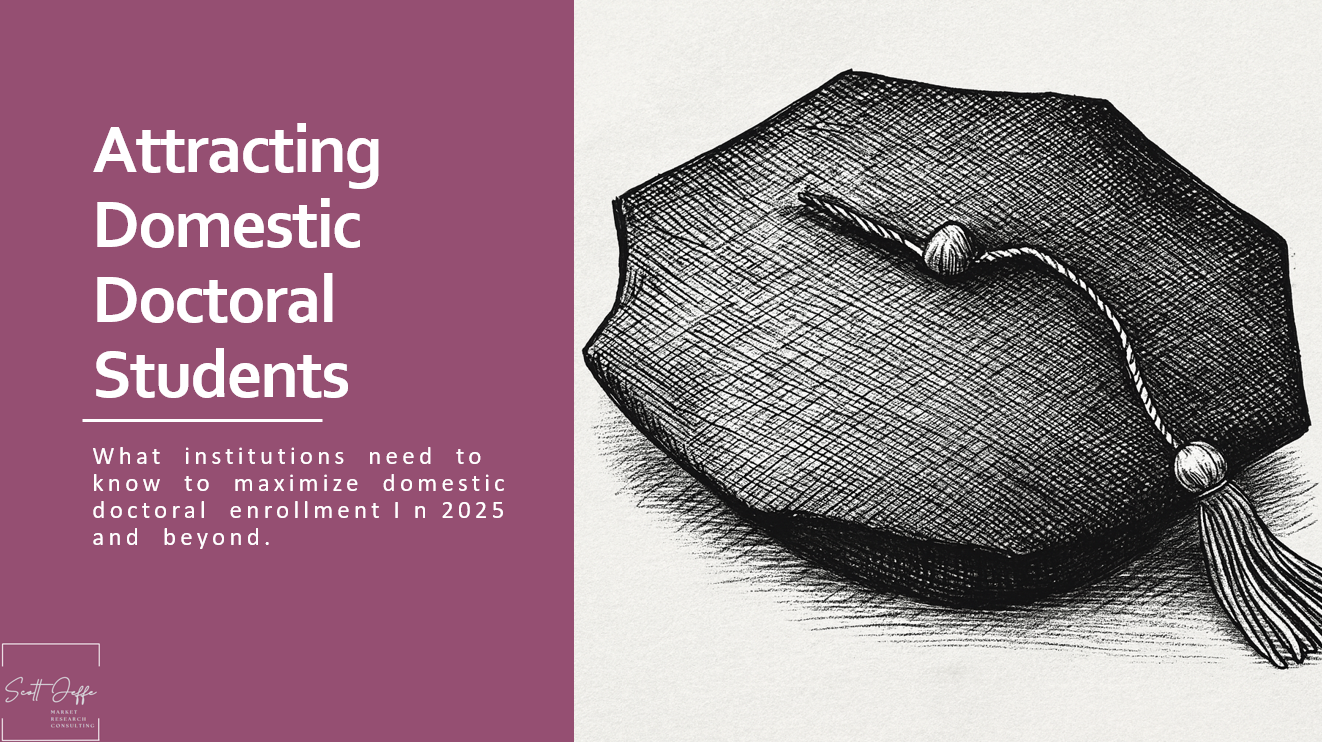
Meeting the Emerging Doctoral Enrollment Challenge
For decades, graduate programs across the United States have relied heavily on international students to fill their classrooms. This summer, NAFSA projected as many as 130,000 fewer international students arriving for the fall semester (at the cost of more than $7b in lost economic activity). In mid-September, Inside Higher Education reported that international student contraction appears to be greatest at regional and smaller institutions. A week later, the analyst Chris Glass indicated that the situation MAY not be as bad as predicted.
Whatever the cast, the sector faces a major shift. Key programs and institutions that want to maintain strong doctoral enrollments will need to focus more strategically on the domestic market
That’s why I am publishing my latest report, Attracting Domestic Doctoral Students: What Institutions Need to Know to Maximize Enrollment in 2025 and Beyond. It provides a data-driven roadmap for success.
Why Domestic Students Matter Now
In 2023–24, nearly half of new graduate students were international, making U.S. programs vulnerable to global disruptions. While only 17 percent of all doctoral students are international students, among 16 doctoral disciplines, five enroll more international students than domestic students. At the same time, domestic doctoral degree production has grown steadily—up 69% since 2000—with women now earning the majority of doctoral degrees. This presents a major opportunity for universities ready to adapt their recruitment strategies to align with domestic student priorities.

What We Learned About Domestic Doctoral Students
My research, combined with national survey data, highlights key differences between domestic and international doctoral students:
Career-focused: More than three-quarters pursue a doctorate to advance their career, with over half citing higher earnings as a top goal.
Location-bound: Most apply to multiple programs, but more than half stay within 50 miles of home.
Learning preferences: 80% prefer classroom or hybrid programs, with minimal interest in fully online formats, but greater interest in hybrid (than internationals).
Expectations for speed: Slow response times significantly reduce interest—students expect answers within hours, not days.
Decision drivers: Cost, future employment opportunities, and program reputation are the leading enrollment factors.
These findings show that domestic doctoral recruitment requires an approach and positioning that is quite distinct from the “quality and prestige” positioning that attracts international students. You must emphasize career outcomes, highlight quality AND flexibility, and respond quickly with personalized communication.
What Institutions Should Do
The report outlines a practical “to-do” list of six critical steps, including:
Investing in SEO visibility (students begin their search online).
Offering hybrid/blended formats for working professionals.
Providing clear, upfront messaging on cost and career outcomes.
Coordinating rapid, personalized communication from recruiters and faculty.
By understanding and responding to the motivations of domestic doctoral students, institutions can build a stronger, more resilient enrollment pipeline.
Download the Full Report
The full report, complete with detailed findings and actionable recommendations, is available now: Attracting Domestic Doctoral Students: What Institutions Need to Know to Maximize Enrollment in 2025 and Beyond.
